Young Minds, Sharp Moves: 1st World Cadets Chess Solving Championship
On the 21st of November, Montesilvano, Italy, hosted the inaugural World Cadets Chess Solving Championship. Running concurrently with the World Cadets Chess Championships 2024, this represented an important milestone in FIDE's and the World Federation for Chess Composition's mission to popularise chess-solving by incorporating it into mainstream tournaments. The championship comprised three age-based categories: under 8, 10, and 12, with six chess positions set for each category to be solved within one hour. With this report, discover the talented young solvers who claimed top honours and delve into some of the intriguing puzzles that pushed their strategic thinking and problem-solving abilities to the limit.
In what is heartening news for lovers of chess problems and studies, the International Chess Federation (FIDE) and the World Federation for Chess Composition (WFCC) have struck a strategic alliance to promote chess composition worldwide. A cornerstone of this collaboration is the aim to integrate chess-solving competitions into major international chess tournaments. Earlier this month saw the vision turn into reality as the World Youth Chess Solving Championship (WYCSC) successfully debuted alongside the World Youth Chess Championships 2024 in Florianópolis, Brazil. Continuing the momentum, this week witnessed another breakthrough event, this time in Montesilvano, Italy: The World Cadets Chess Solving Championship. The contest took place at the Pala Dean Martin - Congress Center on the 21st of November, against the backdrop of the World Cadets Chess Championships 2024 and attracted nearly 230 young participants from all over world.



The championship comprised three age-based categories – under 8, 10, and 12 – with participants in each category tasked with solving six chess positions within 60 minutes. Specifically, the under 8 category had to take on 5 two-movers and 1 endgame study, while the under 10 and 12 participants solved 4 two-movers, 1 three-mover, and 1 endgame study. Of the 18 puzzles, we have handpicked four, which we thought were especially instructive.

Speaking of the results, the participants could score a maximum of 30 points in the competition, with 5 points awarded for each correctly solved puzzle. In the under 8 section, no participant achieved the full score. Jan Szumiec of Poland and Sofia Baghramyan of Armenia shared the top score of 25 points, correctly solving 5 out of the 6 positions. However, Jan was declared the winner, having submitted his answers approximately 10 minutes before Sofia. The under 10 category was dominated by Anand Tsogtbileg of Mongolia, who achieved a remarkable 100% score, solving all 6 problems correctly in 51 minutes! The under 12 category was won by 2012-born Eliran Shilon Rahav from Israel, who achieved an impressive 29.5 points, missing perfection by only half a point.

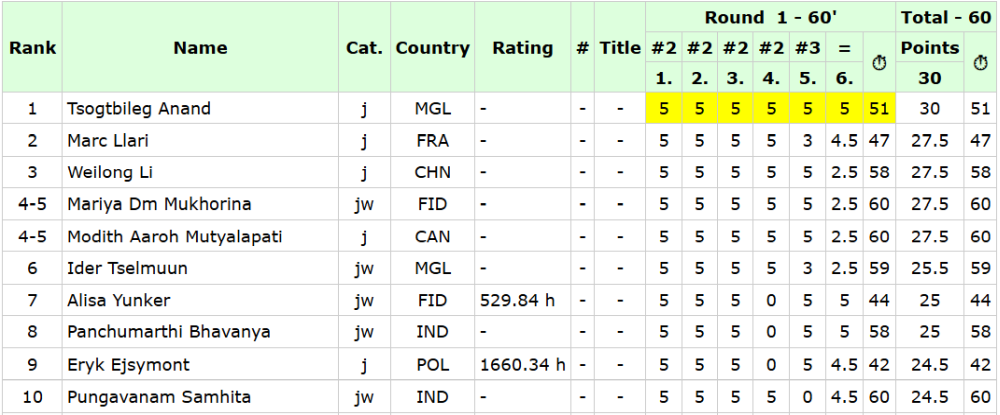

Photo Gallery
Niklesh Jain from ChessBase India attended the event and took some fantastic photos, capturing the emotions and excitement of the contest. Here are some of his snaps:




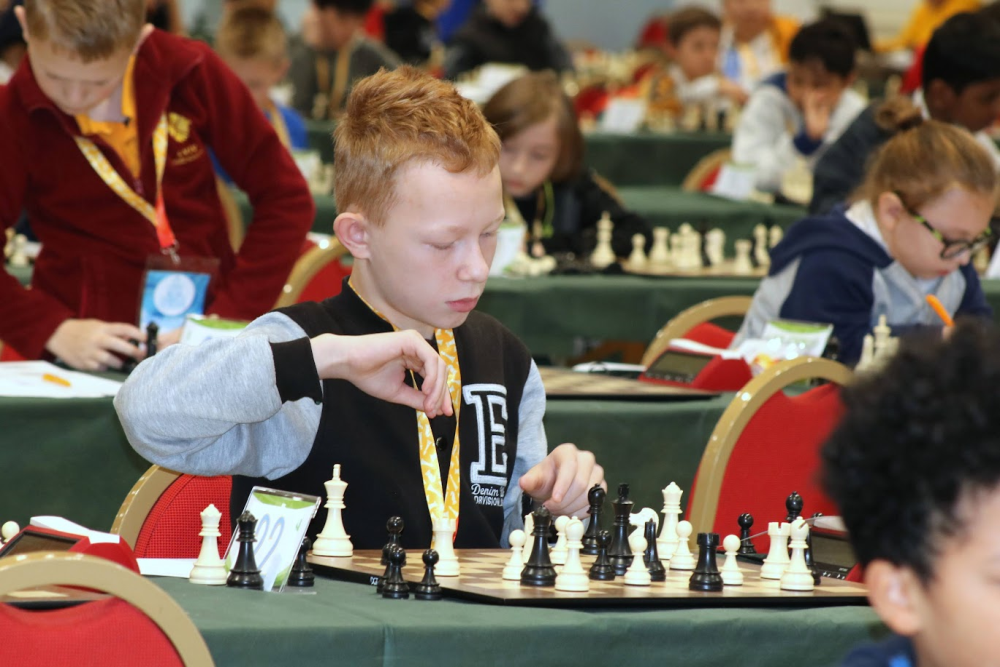
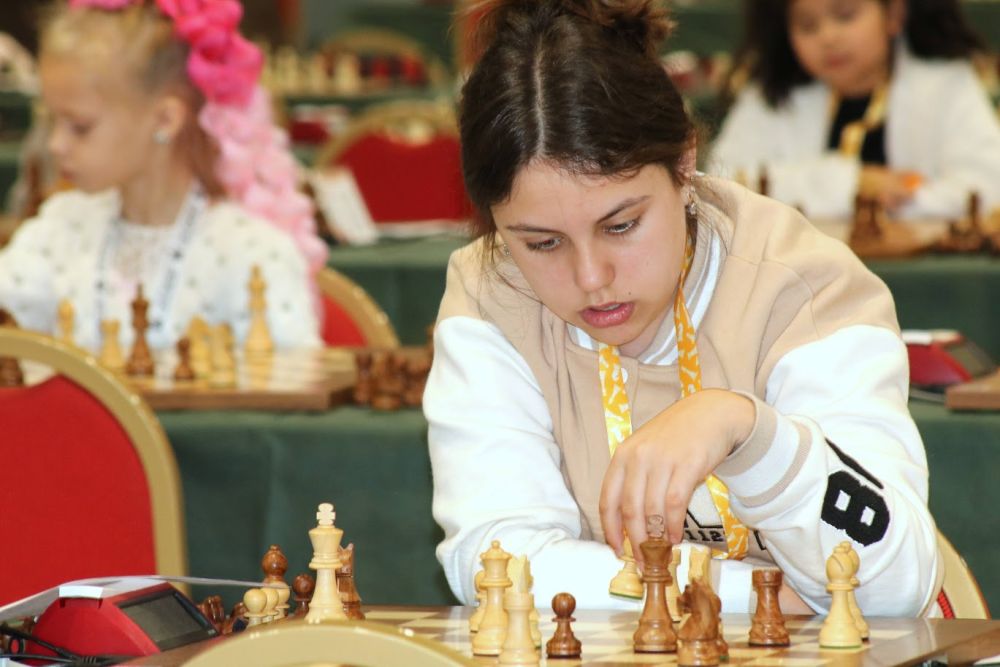


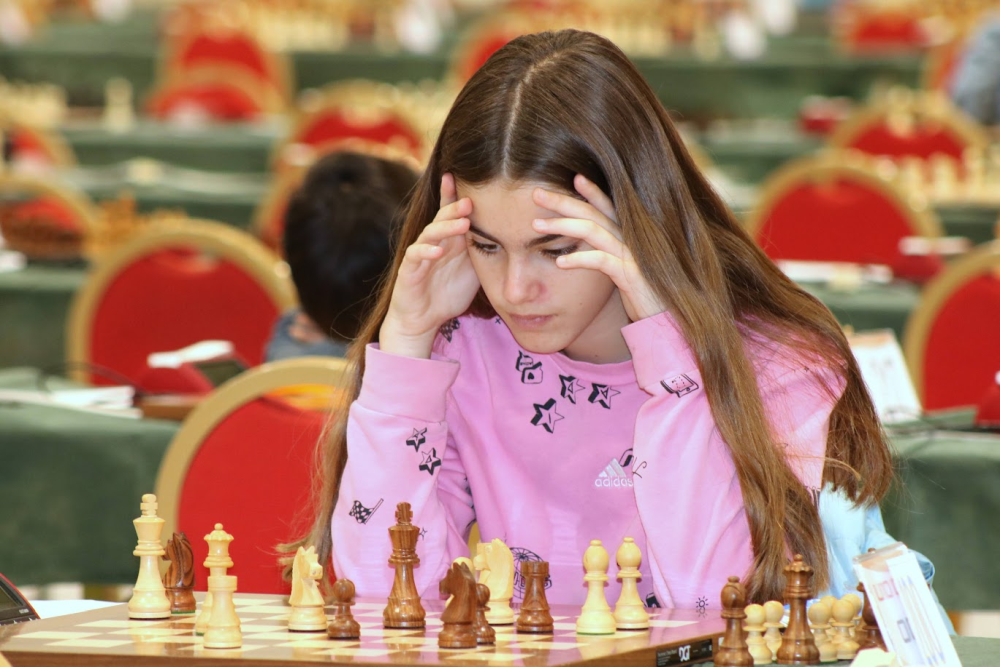

Batteries, Cross-checks, Zugzwangs...
Now it's time to delve into the solutions to the problems shared earlier!
Problem 01
Tom Gedney Hart, British Chess Magazine, 1884

This 140-year-old problem was likely one of the easiest in the contest. What immediately catches the eye is White's king-bishop battery, directly aimed at the black king on f6. But how can White unleash it? The key is 1.Kc3!, a subtle shift backward. Now Black finds themselves in a curious zugzwang. Whatever move they make – and they must make a move – allows White to get their king off the a1-f6 diagonal, releasing the bishop behind and delivering checkmate. Any move of the f1 knight, say 1...Nh2, leaves d2 undefended, enabling 2.Kd2#. 1...Bd1 allows 2.Kc4#, while 1...Bxe6 or any other move of the b3 bishop facilitates 2.K(x)c2#. For 1...Nb4 or any move of the a6 knight, there is 2.K(x)b4#, 1...a3 leads to 2.Kxb3#, and finally, 1...Ke5 is met by 2.Ng4#. A pretty problem, but the next two-movers show greater complexity.
Problem 02
Mike Prcic, StrateGems 1998, Commendation

White has two main ideas: releasing the queen on a7 by moving either the b7 bishop (threatening 2.Qe7#) or the b6 rook (threatening 2.Qxd4#). In all, there are several candidate moves, but only one works.
1.Rc6? and 1.Bc8? are refuted by 1...Nf5!, as White doesn't have 2.Rxd5#.
1.Rb1? (or any other move of the b6 rook) and 1.Bc6? fail to 1...Nc5!, as White lacks 2.Bxd6#.
Thus, by elimination, we arrive at the only move that works: 1.Ba8!. Now, 1...Nf5 and 1...Nc5 are met with 2.Rxd5# and 2.Bxd6#, respectively.
Problem 03
Vladimir Troyanovski, Zvezda, 1955
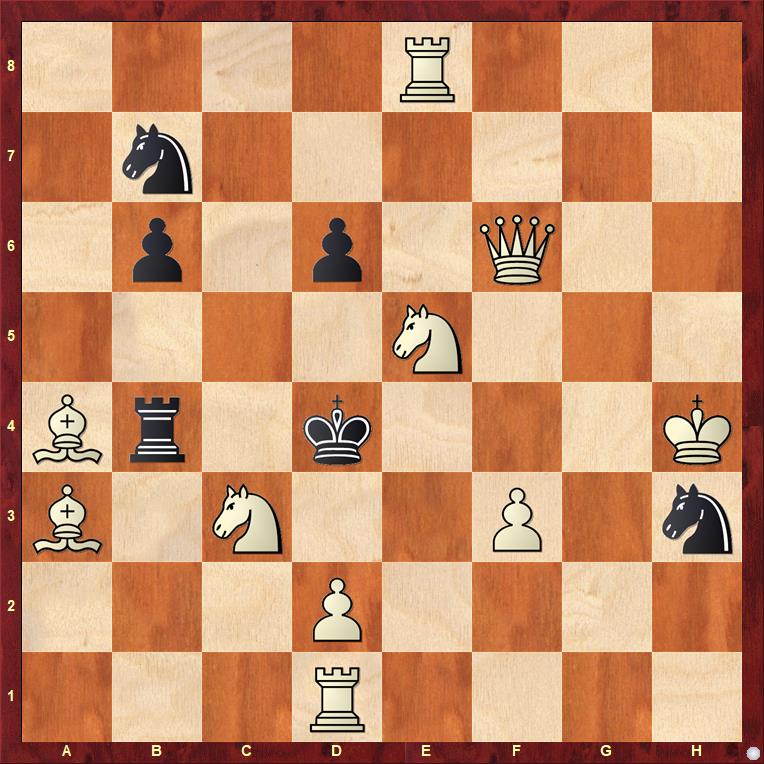
In the diagram, the black king has one escape square: c5, and the check 1...Kc5+ can be met with 2.d4#. However, the capture 1...dxe5 is unprovided. 1...dxe5 2.Qxe5+ lets the bK escape to either d3 or c4. The key 1.d3!, threatening 2.Nd7#, addresses this problem; now 1...dxe5 2.Qxe5 is mate. But wait, does it also not concede two more escape squares to the enemy monarch, namely c3 and e3? Yes, fortunately though, 1...Kxc3+ and 1...Ke3+ are answered by the battery mates 2.Nc4# and 2.Ng4#, respectively. Additionally, 1...Kc5+, as previously mentioned, runs into 2.d4#. These last three variations showcase the cross-check theme, where White responds to Black's check by interposing a piece/pawn, which simultaneously delivers a mate.
Problem 04
Matti Arvo Myllyniemi, Olympia-Turnier 1964, 3rd Commendation

1.Nf2, threatening 2.g3#, is refuted by 1…h1=N!, and pushing 1.h7 also doesn’t lead to a mate in 3 after 1…g5! 2.h8=Q Bh6, etc.
As with many chess problems, the key to solving this one lies in noting the set play. Black's mobility is highly restricted and of the few legal moves they have, some are already provided for. 1...exd5 allows 2.Qf5 followed by mate on the next move. Similarly, 1...g6 can be met with 2. Qf4+ Kh5 3.Ng3# and 1…Kg4 with 2.Nf2+ Kh4 3.g3#. Hence, all we have to do is find a way to meet 1...g5 and 1...gxh6.
1.e4, controlling f5, is a notable try. Now 1...g5 is answered by 2.Qxh2+ Kg4 3.Nf2#. However, 1...gxh6 still remains unaddressed. The key move rather is 1.e3!. This controls f4 and puts Black in a zugzwang. Now 1...g5 is replied by 2.Qxh2+ Kg4 3.Qh3# and 1...gxh6 by 2.Ng3 followed by 3.Qf4#. And, as we have already seen, there are continuations set for the remaining black moves:
1...Kg4 2.Nf2+ Kh4 3.g3#
1...g6 2.Qf4+ Kh5 3.Ng3#
1...exd5 2.Qf5 threat: 3.g3# 2…g5 3.Qh3#
In the under-12 section, this problem stood out as the most difficult, as only three young contestants managed to earn the full five points.
Photos from Closing Ceremony:
_Y5G3T_1024x683.jpeg)
_2WXV7_1024x683.jpeg)
_PYZ1E_1024x683.jpeg)
_7JQAV_1024x683.jpeg)
_T2VJ9_1024x683.jpeg)
_AKSC7_1024x683.jpeg)
_J1H8R_1024x643.jpeg)
_68Z24_1024x610.jpeg)












































